
2023-04-18
In commercial operations, we often deal with several fields such as website design, UI design, and graphic design. Understanding the differences among them is very important for us to conduct business. I. Different Design Purposes The core purpose of website design is to create a website that can operate smoothly and provide a comfortable user experience. It's like building a house. We need to set up the overall framework well. For example, we have to plan which sections the website will have, how to enable users to smoothly navigate from one page to another to find what they want, and also plan functions such as product display and the ordering process. For instance, if we want to build an enterprise official website, it should have basic sections like company introduction, product and service display, and "contact us", and visitors should be able to easily find the contact information or place an order to purchase products. UI design mainly aims to make the interfaces of digital products such as software, websites, and mobile applications both user-friendly and visually appealing. It involves considering how to make it more convenient for users when they interact with the interface. For example, we need to think about what an appropriate size for a button is, where to place it so that users don't have to search hard for it, and what the response will be after clicking it. All these details need to be taken into account. Just like when developing a mobile shopping APP, UI designers must ensure that during the processes of searching for products, adding items to the shopping cart, and settling payments, the interface design won't cause any trouble for users and the operations will be smooth. Graphic design is mainly to clearly convey specific information through visual elements such as pictures, texts, and colors, and attract people's attention. For example, when designing a product brochure, it should enable customers to quickly see key information such as the product's advantages, price, and purchasing methods. Use creative images and layouts to attract people and make them interested in the product. II. Differences in Design Scopes Website design covers a wide range. It starts from choosing a website domain name, considering which server to use to make the website run fast, to the overall architecture planning of the website. For example, whether to make it a simple single-page website or a multi-page website with rich content, how to layout each page, how to match colors, and which pictures and icons are suitable to use, etc. It's a job that requires comprehensive consideration from the overall to the details, just like planning a commercial complex, where everything from site selection to the layout and decoration styles of each store inside needs to be planned well. UI design mainly focuses on the interface of digital products. It includes how to arrange various information on the interface, how to distribute operation buttons, such as how menus expand, whether there are animation effects when switching pages and other interactive elements, as well as how to design visual elements like icons and progress bars. Moreover, UI design has its own specification requirements for different mobile or computer systems. It's like making mobile phone cases for different brands of mobile phones. The design must be done according to the size, button positions and other characteristics of each mobile phone model. Graphic design has a particularly wide range. It includes printed materials like brochures and business card designs, the appearance design of product packaging, and various advertisements, whether they are outdoor billboards or online advertising images. It mainly focuses on skillfully combining texts, graphics, and colors on a flat surface. Generally, there is no need to consider user interactions with it. For example, when designing a product packaging box, it's necessary to make the product stand out on the shelf through attractive patterns and texts on the surface of the box to attract consumers to buy it. III. Differences in Tools and Technologies Used Website Design One needs to be proficient in website design software. For example, Adobe Photoshop can be used to write code and layout pages, and Sketch can be used for interface design and simple prototyping. One also needs to understand web programming languages such as HTML, CSS, and JavaScript to implement various front-end functions and dynamic effects of the website. If it involves website back-end management, such as data storage, one also needs to have knowledge of databases, like MySQL, and server-side programming languages, like PHP, JAVA, etc. It's just like when a chef cooks, he not only needs to know how to use pots, pans and other utensils but also understand food ingredient combinations and cooking techniques. UI Design The commonly used tools are software specifically for interface design such as Adobe XD and Sketch, and cloud-based design tools for convenient team collaboration like Figma. UI designers need to be familiar with the interface design specifications of different platforms. For example, both the Apple iOS and Android systems have their own sets of requirements. They also need to understand some principles of interaction design. For example, when a user clicks a button, there should be a feedback, such as a color change or a small animation, to let the user know that the operation is successful. It's like making clothes. The cutting and design of styles should be done according to different people's body shapes and fashion trends. Graphic Design The main software used is Adobe Photoshop for image processing, Illustrator for creating vector graphics, and InDesign for book and magazine layout. Graphic designers focus on aspects such as graphic creativity and text layout. For example, they need to know which fonts look good when combined and how to use graphic creativity to attract attention, like combining two unrelated graphics into a new creative graphic. It's like when a painter creates a painting, mainly relying on the skillful use of paintbrushes and pigments to create works. IV. Different Emphases on User Experience Website Design It must be ensured that the website can be displayed and used normally on various browsers such as Chrome, Firefox, and on different devices like computers, mobile phones, and tablets. The loading speed of the website is also crucial. If it takes a long time to load, users will leave. The website's navigation should be clear so that users can quickly find the content they want. It's like the signs in a shopping mall should be clear to enable customers to smoothly find the stores they want to go to. UI Design The focus is on the user experience when interacting with the interface. For example, buttons should be large enough to be convenient for users to click. Especially on mobile phones, important buttons should be within easy reach when operating with one hand. The feedback after clicking a button should be obvious to let users know that their click has a response. It's like the buttons on an elevator. They should be easy to press, and after pressing, there should be a light on or a sound prompt to let users know that the operation is successful. Graphic Design The user experience mainly lies in visual impact and the accuracy of information conveyance. For example, when designing an outdoor advertisement, it should be visible to passers-by from a distance and they should be able to understand at a glance what the advertisement is about, whether it's a promotional activity or a new product promotion. The key information should be highlighted. It's like the signs on the roadside. They should be eye-catching so that people can know at a glance what the store is for.


2023-04-18


2023-04-18


2023-04-18


2023-04-18


2025-09-13


2025-08-13
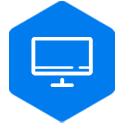
Website Construction
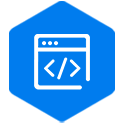
Website Development

Website Design
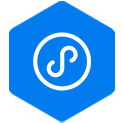
Mini-program Development
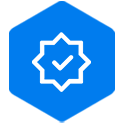
WeChat Official Account Development

APP Development

Website Construction in Beijing
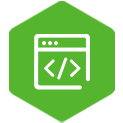
Website Development in Beijing

Website Development Company

Mini-program Development Company

WeChat Official Account Development in Beijing

APP Development Company